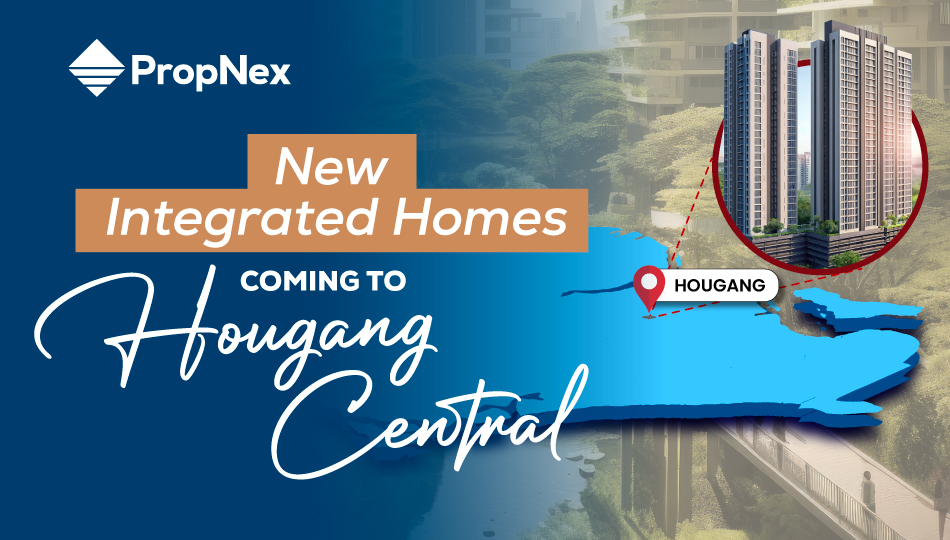One-Bedroom Units: A Hidden Gem Or A Lifestyle That's Losing Its Spark?

As property prices continue to climb, one-bedroom condo units have emerged as a popular choice for first-time homeowners and young single buyers due to their lower quantum. These compact homes offer a balance of affordability and convenience, especially in urban areas like Singapore, where space is at a premium.
However, with changing buyer preferences and lifestyle shifts, some, including myself, are beginning to question if the one-bedroom lifestyle still holds the same appeal. This article explores the benefits and limitations of one-bedroom units, examining whether they remain a valuable investment or a trend that may soon lose its spark.
One-bedroom units have carved a unique niche in Singapore's bustling real estate market. They often sell out quickly during new launches. For instance, at The Botany @ Dairy Farm, all 36 one-bedroom units were sold at launch, along with 93% of the 104 two-bedroom units. Similarly, at Blossoms by the Park, all one- and two-bedroom units were snapped up on launch day. These examples illustrate the strong demand for one-bedroom units in new developments. This appeal is driven by two key factors:
1. Affordability and accessibility
For many young Singaporeans, buying property is not just about having a place to call home; it is a significant financial milestone. One-bedroom units are typically the most affordable entry point into Singapore's private property market, a crucial factor in a city where property prices continue to soar. According to URA, the average psf for one-bedroom units across Singapore typically ranges from $1,500 to $2,500, depending on the property type and area. In prime areas, such as the Core Central Region, prices can reach or even exceed $2,500 psf. This value, compared to two-bedroom units priced between $2,200 and $3,000 psf, allows young professionals to step onto the property ladder without stretching their finances excessively.
Value appreciation of one-bedroom units across districts
Source: Investment Suites
The data reveals interesting trends across the three regions. In the CCR, PSF increased modestly by 5.41%. This region, known for its luxury properties, continues to maintain its premium standing. However, the growth in prices has been relatively slower compared to other regions, especially in the recent couple of years. This may be due to the 60% ABSD imposed on foreign investors, who dominate the luxury market, curbing their interest.
The RCR displayed significant price growth, with PSF increasing by 29.98%. This strong performance underscores the growing appeal of city-fringe locations, which offer a strategic balance between proximity to the CCR and greater affordability. Buyers are evidently drawn to the value proposition of RCR properties, resulting in robust demand and price appreciation.
Lastly, the OCR outperformed both CCR and RCR in percentage growth, with PSF making an impressive gain of 30.72%. This exceptional growth highlights the increasing attractiveness of suburban estates, driven by affordability and strong demand from families and HDB upgraders. The OCR's performance reflects the evolving preferences of buyers, who are prioritising space and better value for money.
2. High rental demand and yields
One-bedroom units have also carved out a niche as investment properties. They are popular with renters, particularly among young professionals, expatriates, and corporate tenants who value proximity to work and entertainment hubs. These units often enjoy higher rental yields (3% to 4.5%) than larger units due to the demand in rental markets for smaller, conveniently located living spaces. Investors looking to achieve stable rental income with minimal vacancy periods often gravitate toward these units, which have proven resilient even amid shifts in rental market conditions. The strategic locations of many one-bedroom units in districts like the CBD and other popular residential areas enhance their desirability among transient professionals and young couples alike.
Despite the advantages listed above, the appeal of one-bedroom units may be facing new challenges as changing work habits and lifestyle preferences are beginning to shift demand in Singapore's residential market. Is the one-bedroom lifestyle losing its spark? Let us explore the factors influencing this shift in preference.
1. Changing lifestyles and work-from-home culture
The move towards remote work and flexible work systems globally has led many to reconsider their need for a dedicated home office space. During the pandemic, many realised the importance of home offices, quiet workspaces, and multifunctional rooms, especially in a small unit where living, working, and relaxing coexists. While one-bedroom units serve as a functional space for a single individual or a couple, they often lack the flexibility to accommodate dedicated work areas or additional rooms. As a result, many look for larger homes that offer multi-functional spaces, where they can work, exercise, and unwind without compromising on comfort. While there is the option to get a one-bedroom + study, which is slightly more costly than just a one-bedroom unit, many are also more willing to live further from the city centre in exchange for larger homes, such as Woodlands and Bukit Panjang.
2. Desire for family-friendly living spaces
Singapore's housing market is also seeing increased demand from young couples and families who value room for growth; many are looking at larger units that allow for family expansion and extra storage. For families planning to grow or households that prioritise comfortable space for hosting guests, the compact layout of a one-bedroom unit may no longer meet their needs, resulting in more demand for two- or even three-bedroom configurations.
3. Increased ABSD
Additionally, the increased Additional Buyer's Stamp Duty (ABSD) has shifted the preferences of investors who are no rethinking their strategies. With limited opportunities for diversifying their property portfolios, some are opting for a minimum of two-bedroom units with two bathrooms, which can effectively serve the same purpose as owning two one-bedroom units by accommodating two separate tenants. This dual-tenant potential offers a practical balance between maximising rental income and managing ABSD implications.
4. Shifting preferences toward larger units with shared spaces
As Singapore's younger generation becomes more financially stable, there is a notable trend toward prioritising quality of life over minimalist living. While one-bedroom units fit well with the "tiny home" concept, today's buyers are increasingly willing to invest in larger units that offer communal spaces, such as study areas, dining rooms, and family zones.
Furthermore, the affordability gap between one- and two-bedroom units is narrowing. Having grown up with a high standard of living, many buyers of today are seeking units that go beyond mere functionality, aiming for homes that offer flexibility and enhance their quality of life. The data below highlights that the appreciation rate of two-bedroom units (red) in recent years has slightly outpaced that of one-bedroom units (blue). Many buyers perceive the extra space as a way to "future-proof" their investment, ensuring that the property can accommodate their evolving needs and potentially appreciate at a stronger rate.
Value appreciation of one-bedroom vs two-bedroom
Source: Investment Suites
We can see new developments reflecting this shift in demand. The floor space of one-bedroom units has generally decreased over the past decade. During the early 2010s, there was a notable increase in the development of one-bedroom units, driven by strong demand from investors and young professionals seeking affordable entry points into the private property market. Developers responded by allocating a significant portion of new projects to these smaller units. The average size of new condo units decreased from 1,206 square feet in the 2003-2012 period to 958 square feet in the 2013-2022 period, marking a 20.6% reduction.
In 2018, URA introduced guidelines to address concerns about the proliferation of small units and their impact on liveability. The guidelines mandated a minimum average unit size of 915 square feet for new non-landed residential developments outside the CCR, effectively limiting the number of smaller units in new projects. While compact units will continue to exist, the proportion of one-bedroom units in new projects has decreased as developers focus on layouts that cater to a more space-conscious buyer.
Case Study #1: The LakeGarden Residences
The LakeGarden Residences, an upcoming condominium project that is due to TOP in 2027, exemplifies this trend. The development offers one- to five-bedroom units ranging from 484 to 2,260 square feet. Notably, about 74% of the 306 units comprise two- and three-bedroom types, including those with a study. Only 23 units are one-bedroom type, including those with a study.
Case Study #2: The Reserve Residences
The Reserve Residences, set to TOP in 2028, is another great example of this rising trend. The development offers one- to four-bedroom units ranging from 495 to 2,185 square feet. Approximately 70% of the 732 units are two-bedroom and above, including those with a study and/or penthouse. Only 100 units are one-bedroom type.
Despite these shifts, one-bedroom units retain their appeal among specific buyer groups, each with unique motivations and needs.
Young professionals and singles are a core demographic for one-bedroom units. For individuals at the start of their careers or those seeking an independent lifestyle, these units provide an ideal balance of affordability and convenience. These buyers view their first property as a stepping stone in the real estate market. For many, it also offers a chance to build equity and gain independence without overextending financially.
Investors, too, see value in one-bedroom apartments. Rental demand from expatriates and young professionals is consistently high, especially in neighbourhoods with quick access to the CBD and MRT connectivity. Areas such as Chinatown, Bugis, and Novena attract tenants who seek compact, conveniently located units with good amenities. For investors focused on cash flow, one-bedroom units offer attractive yields with fewer costs for upkeep, making them a sound investment.
Retirees and empty nesters also will find one-bedroom units appealing. Many older individuals or couples looking to downsize prefer these units for their simplicity and reduced maintenance.
Investing in one-bedroom units in Singapore has long been attractive due to their affordability and strong rental demand. These units offer a more accessible entry point into the private property market, especially in Singapore's high-cost environment, making them popular among first-time investors and younger buyers looking for a strategic foothold in real estate. However, to make a sound investment, buyers must consider not only market dynamics but also their exit strategy and competition in the resale and rental market.
Location is paramount when considering the resale potential of a one-bedroom unit. Purchasing a one-bedroom in areas, like District 10, might sound impressive, but high prices could limit the pool of potential buyers when you eventually look to sell. The question investors need to ask is, "How many buyers will be able to afford this premium price tag in the future?" Investing in one-bedrooms outside of high-demand, high-cost districts can sometimes present a more balanced exit strategy, appealing to a broader market of renters and buyers.
Additionally, the composition of other units in the development plays a significant role. If the development is filled primarily with one-bedroom units or other small configurations, such as boutique developments, investors may face stiff competition to attract tenants. The niche appeal of one-bedroom units limits the buyer pool, which could lead to a scenario where similar units compete to secure tenants, driving down potential rental income. For some buyers, this may raise the question: Is it worth investing in a one-bedroom when spending slightly more on a two-bedroom unit could attract a broader market and deliver a better long-term value?
The rental demand for one-bedroom units remains relatively strong, especially among young professionals and expatriates who seek convenient, low-maintenance living spaces near work and entertainment hubs. Yet, yields may not be as high as before, due to the increased supply of one-bedrooms in recent years. Regulations from URA have also influenced supply, requiring minimum average unit sizes in new developments to ensure liveability. While this limits the number of smaller units available, potentially supporting their value in some cases, it also reduces the choice of developments with one-bedroom options, narrowing the field for investors.
Finally, while one-bedroom remains affordable and can be a steady source of rental income, investors need to weigh all these factors and align their purchase with personal goals and exit strategies. For some, a one-bedroom may still be a smart choice; for others, the appeal of slightly larger units may offer better resale value, fewer exit concerns, and broader market appeal. As Singapore's property market continues to evolve, a well-considered approach to location, competition, and unit composition will be key in determining if a one-bedroom unit is the right fit for a balanced investment strategy.
Views expressed in this article belong to the writer(s) and do not reflect PropNex's position. No part of this content may be reproduced, distributed, transmitted, displayed, published, or broadcast in any form or by any means without the prior written consent of PropNex.
For permission to use, reproduce, or distribute any content, please contact the Corporate Communications department. PropNex reserves the right to modify or update this disclaimer at any time without prior notice.














